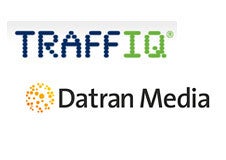 TRAFFIQ and Datran Media announced a partnership today that will integrate Datran’s audience measurement platform – Aperture – into TRAFFIQ’s media platform. Read the release.
TRAFFIQ and Datran Media announced a partnership today that will integrate Datran’s audience measurement platform – Aperture – into TRAFFIQ’s media platform. Read the release.
TRAFFIQ CEO Mark Kahn spoke with AdExchanger.com about the industry and the announcement.
AdExchanger.com: What are some of the pain points of audience buying today?
MK: There are three fundamental areas where audience buying can create pain: efficiency, control and transparency — and they go hand-in-hand-in-hand. Buying audience is obviously all about the cookie and I think there is industry acceptance of the cost/benefit that comes with reaching the right users at scale. However, just because we understand the risks doesn’t mean clients understand them. And buying audience across exchanges and networks still doesn’t alleviate the risk of reaching the right user in a dark corner of the web. You may hit the right user, but your brand is still at risk when you can’t control the environment that the user is in.
When I say transparency, I mean transparency in data and placement. While an advertiser might be reaching the right audience, the precise definition of that audience and the methodology used to get there is still “secret sauce.” This is one reason that demand-side platforms are taking shape — to give the data control back to the client. But if you’re buying audiences across third-party exchanges, they can only reveal so much without exposing their own black box methodology. On top of that, one provider’s audience definition may be very different from another provider, even though they are describing them precisely the same way. Not all “auto intenders” are created equal.
When I say efficiency, media planners and buyers are faced with a disparate set of tools with disparate data sets to weed through. With TRAFFIQ and now Aperture, we are further consolidating the tools and assets needed to do effective media planning and buying and to strip out both cost and endless inefficiency that you lose off of TRAFFIQ.
AdExchanger.com: Is the audience measurement technology directly mapped to audience targeting technology? Are you buying cookies for a target audience that have been identified through Datran’s system on the TRAFFIQ network of sites?
MK: It will be. We’ll soon be able to map the composite audience profiles of different campaign audiences back to those audiences elsewhere on the web, giving our partners the ability to find similar high performing audiences at scale but with total placement control. This will provide data to take true action against. Ultimately, another tool to deliver better overall campaign performance. Remember that in our model, we’re matching buyers and sellers directly, so it’s not about dynamic cookie recognition and delivery. It’s about empowering agencies and advertisers with more data, and then allowing publishers who have matching audiences to work with those buyers to create the best media package possible. Our clients and soon our publishers will be able to build these audience profiles — meaning TRAFFIQ is truly a transparent audience matching system, not just a closed-loop exchange with limited transparency.
AdExchanger.com: Other than audience buying, what trends are you seeing from clients today?
MK: Obviously, one trend we’re seeing is an increase in the amount of sites per plan. We are also seeing brand dollars starting to flow again. As the mid-tail becomes more quantified in terms of audience value, and if you make the mid-tail transparent, suddenly advertisers feel more comfortable buying beyond just the same comScore top 50 sites they’ve run with for years. But you need an ability to get to scale in the mid-tail, and TRAFFIQ allows for that. Site and audience discovery is increasingly a focus. “What’s new” is less about new ad packages and more about new audiences and content. We’re also seeing a healthy return of regional advertisers who remained on the sidelines in 2009. And, finally, we’re seeing an increased need to provide clients with cross-media analytics. Conversion attribution is always an issue but more and more clients are looking for data to allow them to understand value of conversion sources, latent conversion effects, and thus are more inclined to understand the value of different parts of each buy — not just blindly optimizing against a top-line eCPA goal.
By John Ebbert











